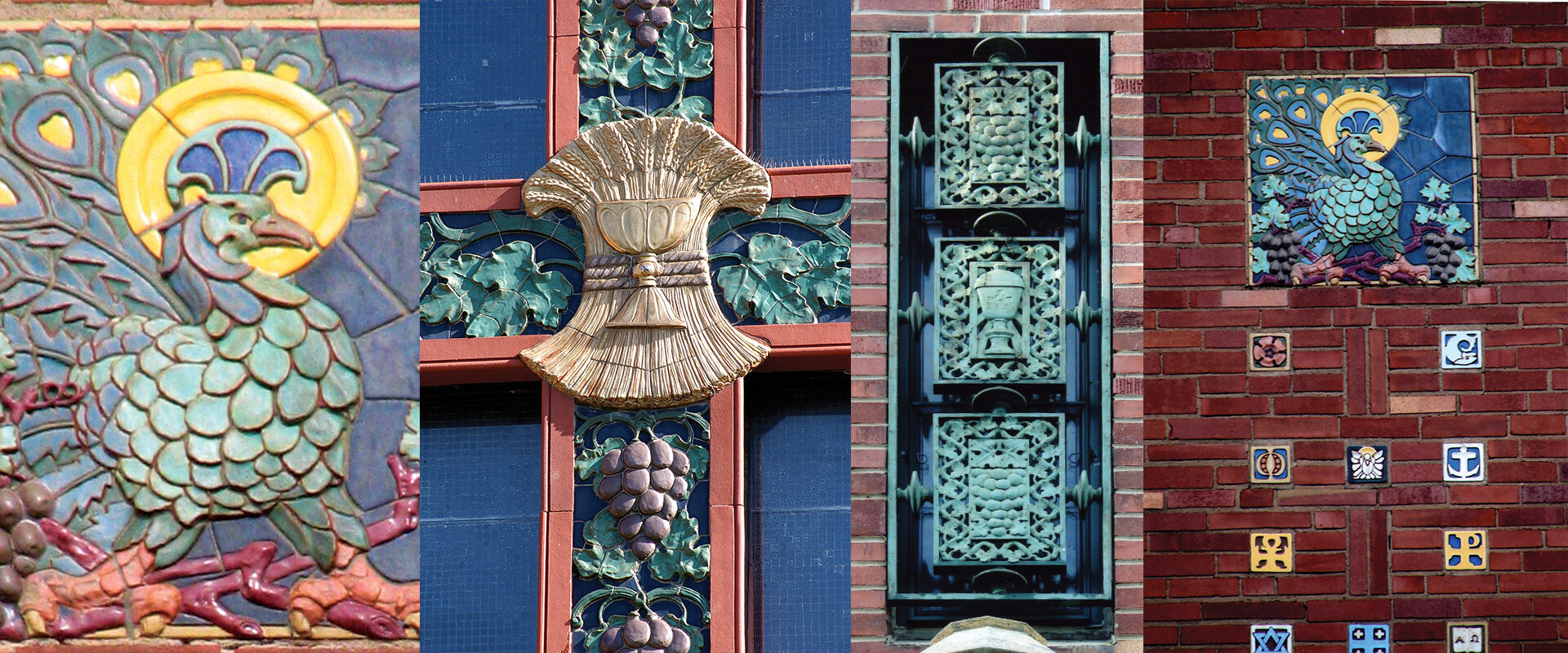
Artistry
LORD'S PRAYER SCULPTURE
In the center of the nave is the suspended low-relief sculpture of the Lord’s Prayer. William Saltzman of Minneapolis was commissioned to do this work. The inspiration for the piece was the words of the prayer that had been painted on the front wall of the chancel, which was visible to all who entered the sanctuary. Copper and braised welding techniques were used for the warm, earthy qualities. The vertical lines accent the spiritually uplifting nature of the prayer. The letters touch one another to bring about a sense of the oneness of the total prayer. Behind the words, and yet central to them, is a cross.
SYMBOLS
The narthex (entry area at the back of the sanctuary) and the nave (the main part of the worship area) of the church have a variety of Christian symbols.
A Jerusalem Cross is found in the stone mosaic on the floor of the narthex as one enters through the main doors. It was used on the coat of arms of the first ruler of the "Latin Kingdom of Jerusalem". It has come to represent the five wounds of Jesus on the cross and the mission of the church to carry the Gospel of Jesus Christ to the "four corners of the earth."
Stenciled on the arches at the sides of the nave are a series of ancient Jewish and Christian symbols.
The Star of David or the double triangle reflects both our Old Testament heritage of the People of Israel as well as the New Testament understanding of "One God in Three Forms."
The "Chi Rho" (XP), the first two letters of the word "Christ" in Greek, form the monogram which was the earliest and simplest symbol representing Christ. It was commonly used on the tombs of the early Christian martyrs.
The Jerusalem Cross (as noted above) has come to represent the "Latin Kingdom of Jerusalem," the five wounds Jesus received at his crucifixion (John 20:25), and the mission Christ calls us to in this world (Matthew 28:19).
The fish is an ancient and universal symbol of the Christian faith. During times of religious persecution, early Christians had to use secret signs to indemnify themselves to other believers while hiding their identity from the foes of Christianity. A person might draw a simplified picture of a fish in the dirt while talking to someone else. If the other individual recognized the figure, the two would know of their common bond in the faith. The Greek word for "fish" (pronounced ichthus) became an acrostic for the Greek phrase that is pronounced though not spelled Yasous Christos Theou Hyos Soter, which means "Jesus Christ, Son of God, Savior."
When the top part of an anchor is in the shape of a cross, it is a symbol of Jesus Christ, our sure Anchor. It was first used as a Christian sign from the years of persecution before Constantine established the Christian faith as the state religion of the Roman Empire in 324. The anchor recalls the words of the Epistle to the Hebrews that the hope God gives through Jesus Christ is "a sure and steadfast anchor of the soul." (Hebrews 6:19) This hope is what keeps us from being carried away by the storms of life.
The Christmas rose symbolizes the birth of Jesus and the promise of the coming of God’s messiah because it withstands the snow and storms of winter.
Click here for information on the second floor Biblical Timeline mural.


